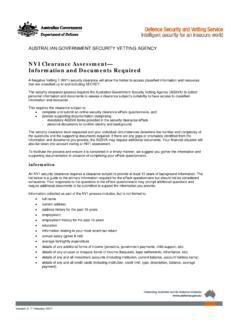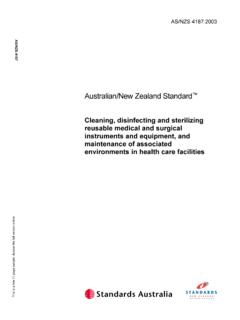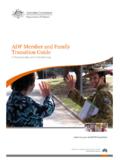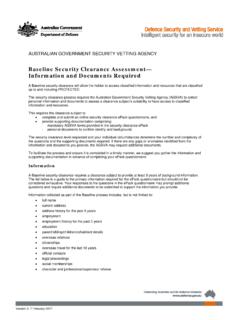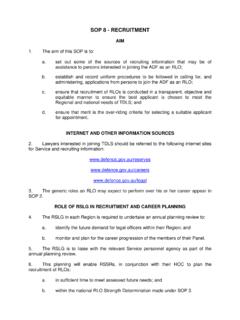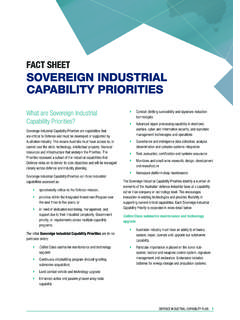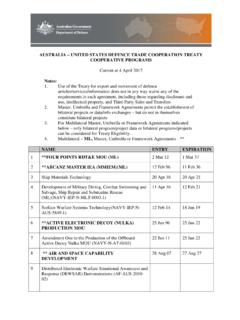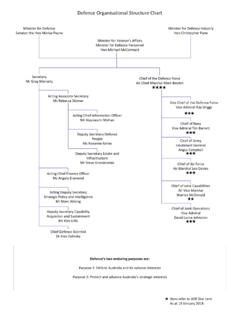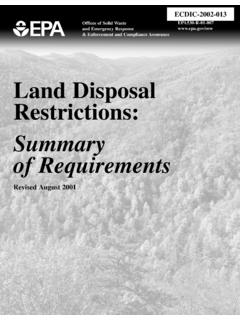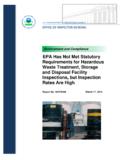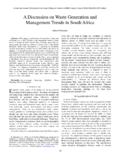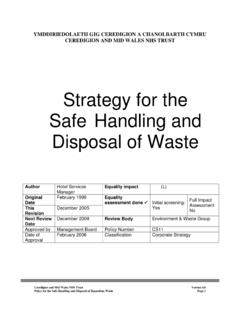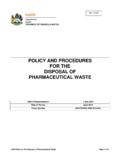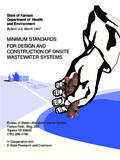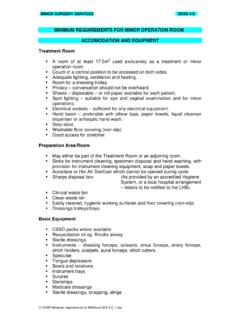Transcription of CHAPTER 3 - SOLID WASTE COLLECTION AND …
1 HLTHMAN, volume 20 part 8 CHAPTER 3 SOLID WASTE COLLECTION AND CHAPTER is concerned with SOLID wastes as found at permanent locations. Although field-type wastes are mentioned in this CHAPTER , they are discussed in more detail in section 2. Australian Defence Force health staff should coordinate with the appropriate overseas or domestic health authorities to ensure compliance with applicable health and environmental COLLECTION and disposal of SOLID WASTE is one of the major problems of sanitation. SOLID WASTE handling must be analysed in terms of sound engineering management. Because volumes of material, types of material, salvage requirements, and methods of disposal vary, all locations cannot operate identical COLLECTION of is a general term covering all types of refuse resulting from living activities of humans and other animals.
2 The methods for handling and disposing of WASTE differ considerably. The different types of SOLID WASTE are subdivided as Garbage is the SOLID or semi- SOLID WASTE incidental to preparing, cooking, and serving food, and cleaning of food service items. It does not include rubbish. Garbage is classified as edible or non-edible. Edible garbage is that part of the garbage which is suitable for animal food such as scrap meat and vegetables. Non-edible garbage is that garbage which cannot be used for animal food, such as tea leaves, bones, and egg Rubbish consists of wastes which originate in food service facilities, barracks, wards, quarters, and offices. It includes items such as wastepaper, plastics, wood, metal, glass, ashes, and broken or damaged crockery.
3 Rubbish may be classified as combustible or non-combustible depending upon whether or not it can be treatment and disposal of WASTE is conducive to the spread of diseases. The more important diseases in this category are dysentery (amoebic and bacillary), typhoid fever, leptospirosis, cholera, plague, endemic typhus, and infectious hepatitis. These diseases are contracted through the ingestion of food or water that has become contaminated with infected human or animal WASTE , or they can be spread by insect vectors whose principal hosts are rodents and vermin. Conditions created by improper WASTE disposal provide food and harbourage for these hosts. Proper treatment and disposal of wastes will aid in the control of these diseases.
4 The major cause of disease outbreaks is contamination of potable water distribution systems primarily via cross-connections and back of multiple containers (dumpsters) service personnel should not be used to clean multiple containers. A multiple container cleaning facility should be centrally located on the route between the disposal facility and the source of refuse materials. It is located where water and sanitary sewer systems are available. It may be more convenient to locate the cleaning facility at the disposal facility. In any case, the facility must have hot water under pressure, and it is desirable to have a steam cleaning cleaning facility should be provided with a concrete slab with proper drainage and of adequate size, a booster pump on the hot water line, and if practical, fittings to introduce liquid soap or detergent into the hose used for COLLECTION of putrescent materials must be cleaned after each emptying.
5 Other containers should be cleaned on an as-required same washing facility may also be used at the end of the day for washing the COLLECTION , volume 20 part 8 3 2 Garbage and rubbish COLLECTION truck of pickup of garbage and other refuse will have a significant impact on the number of vehicles employed in the operation. As a general rule, refuse pickup should be executed twice a week. Twice a week pickup will reduce the fly population by breaking the fly s life cycle. COLLECTION of garbage from all food service facilities and similar facilities is on a daily basis. All other facilities are on a twice a week almost all locations, refuse is collected in trucks and other equipment that are designed specially for this purpose.
6 This specialised equipment has many advantages over equipment which is not designed for refuse COLLECTION purposes. Such advantages include low loading height, large refuse capacity, complete load envelopment, built-in compaction mechanism, rapid unloading of refuse, and water the event that it is necessary to alter other trucks to meet COLLECTION requirements, the following alterations should be beds must be made as watertight as possible; suitable cover such as canvas or chicken wire must be provided to keep refuse from blowing off; desired, the sides of the truck may be built up to increase capacity; the truck is converted back for other use, it must be steam-cleaned or cleaned with hot soapy water, and if it is to be used for transporting any food products, it must be disinfected with a 100 mg/L chlorine of hauls.
7 Trucks should begin collecting materials at points farthest from disposal facilities, so there is a minimum of travel with a full load. The quantity of refuse accumulated daily within any one COLLECTION area can vary. The truck crew may change the length of each route from day-to-day to allow for variations in quantities and still cover the route LANDFILLS principle of the sanitary landfill (see figure 3 1) method of refuse disposal is simple: refuse is dumped into a trench or in small rows (area method), compacted, and covered each day. Sanitary landfills are not used to dispose of infectious wastes except under unusual circumstances that require prior approval and should conform to state and local environmental should be at least hectares per year for each 4000 personnel when the fill is to be metre (m) should be selected where the soil can be excavated to a minimum depth of m.
8 Clay-like soils are preferable, but any soil which will form a seal over the compacted refuse is acceptable. Sites which have surface or subsurface drainage that pollute a water supply should not be order for the sanitary landfill to be operated properly, there should be one equipment operator in charge of the entire operation, and it should be planned and supervised by an engineer. This operator prevents unauthorised entry and scavenging, directs trucks to the unloading place, moves bumper logs, places portable fences for control of blowing paper, and directs policing of the fill site. An assistant may be necessary to direct unloading of COLLECTION trucks and to police the operating average operating conditions, a sanitary landfill for 10 000 people can be operated with one bulldozer and the occasional use of a dragline for digging trenches ahead of operations.
9 For installations over 10 000 people, additional equipment should be provided as required; this equipment should be assigned full time to the sanitary , volume 20 part 8 3 3 Figure 3 1: Diagram of a sanitary sanitary landfill is ready for operation when the original trench is dug, the ramp is constructed, and the access road is usable. At the end of each day when a section of trench has been filled and compacted with the bulldozer, the top, side, and end of the section is covered with earth. The top is covered with 100 cm of compacted earth, and the end is covered with just enough compacted fill to contain the refuse and form a least once each week the compacted refuse must be thoroughly sealed with the final compacted cover.
10 This is done by covering the working face of the trench with at least 30 cm of well compacted earth. The necessity for complete sealing and compacting cannot be over-emphasised. Sealing and compacting reduces future settlement, prevents spread of fires, eliminates odours, and precludes insect and rodent is important to operate a sanitary landfill without scattering paper. The best methods to prevent this are to unload trucks on the windward side of the fill and to erect portable fences on the leeward side. The fences are easily moved to the location where they are needed METHODS AND methods for dry principal methods used for landfilling dry areas may be classified as area, trench, and depression.
